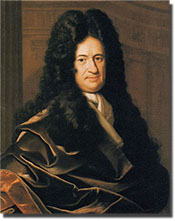Koblenz
Regierungsbezirk (administrative district), central Rhineland-Palatinate Land (state), western Germany. Koblenz is bordered by the Länder (states) of North Rhine–Westphalia to the north, Hesse to the east, and Saarland to the southwest and the Regierungsbezirke of Rheinhessen-Pfalz to the southeast and Trier to the west. It is the largest of three districts in Rhineland-Palatinate and comprises a southern section of the larger historical regions of the Rhineland and Nassau. Its contemporary boundaries were created by an administrative reform in 1969 merging the former districts of Montabaur and Koblenz. Koblenz Regierungsbezirk takes its name from that of the largest city and administrative seat of the district.
Koblenz lies on the massif of the Middle Rhine Highlands and is crossed diagonally from southeast to northwest by the deeply cut valley of the middle Rhine River. The valley is spectacularly narrow and steep in the south, where it must cut through resistant quartzite rock, but it widens somewhat in the softer slate rocks to the north. The warmth and shelter provided by the valley protect Germany's most northerly wine-producing region. Famous for its small picturesque wine villages, terraced vineyards, and castle ruins atop steep hillsides, the middle Rhine valley is among the country's most popular tourist attractions. The lower Mosel (Moselle) River joins the Rhine from the southwest at the city of Koblenz in the Neuwied Basin, the district's chief agricultural region. Dry, fertile pumice and loess soils in the basin support large potato and sugar beet crops. The Lahn River meets the Rhine less than 7 miles (11 km) upriver from the Mosel. The settlement patterns along both tributaries are rural compared with those of the Rhine valley. The Mosel's winding course and narrow valley, with world-renowned vineyards lining the sunny south-facing slopes, have prevented the growth of large towns and industry.
The Rhine, Mosel, and Lahn rivers divide the Middle Rhine Highlands into four distinct regions. Rising south of the Mosel River, the undulating Hunsrück plateau forms the most southerly section of the uplands. It has been cleared of much of its natural deciduous forest and is used for cattle raising. The Rhine River divides the Hunsrück from the very similar Taunus plateau to the east. North and west of the Mosel and Rhine valleys, the Neuwied Basin and Maifeld form a transition to the wooded upland of the Eifel, which averages 2,000 feet (600 m) in elevation. Suitable only for forestry and cattle production, the Eifel landscape is dotted with funnel-shaped volcanic craters, most of which are filled by small scenic lakes. To the northeast is the rolling plateau of the Westerwald, which is composed mainly of slate with some higher, rounded basalt hills. The Westerwald is bounded to the north by the highly industrialized Sieg valley, which extends into Koblenz from North Rhine–Westphalia.
The Rhine valley north of the Lahn junction is the most populated region of the Regierungsbezirk. Ironworks and steelworks are concentrated in the industrial area surrounding the cities of Koblenz and Neuwied. Koblenz is an important traffic junction and a leading centre of wine trade on the Rhine. Pumice is mined from shallow pits in the Neuwied Basin and used in the production of light building blocks. The Kannenbäcker region of the Westerwald is famous for its pottery, and the town of Idar-Oberstein, located in the Nahe valley bordering the southern Hunsrück, is one of Germany's leading centres of trade in precious stones and the jewelry industry.
The native population of Koblenz Regierungsbezirk are descendants of the Franks, a Germanic people who lived in the Rhineland from the 3rd century AD. The people of the southern Hunsrück and Taunus uplands speak a Rhenish Franconian dialect, while in the Mosel valley and northern uplands Moselle Franconian is the dialect most commonly spoken. Roman Catholics and Protestants are about equally represented in the district. The predominant rural settlement pattern is one of irregular compact villages. Area 3,125 square miles (8,093 square km). Pop. (1993 est.) 1,445,025.
Copyright © 1994-2002 Encyclopædia Britannica, Inc.
![]()
Sources
- Encylopedia Britannica 2002, Expanded Edition DVD
Web





